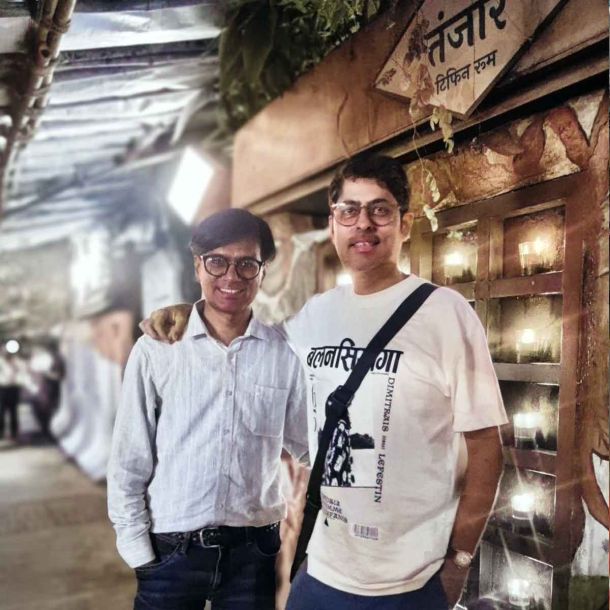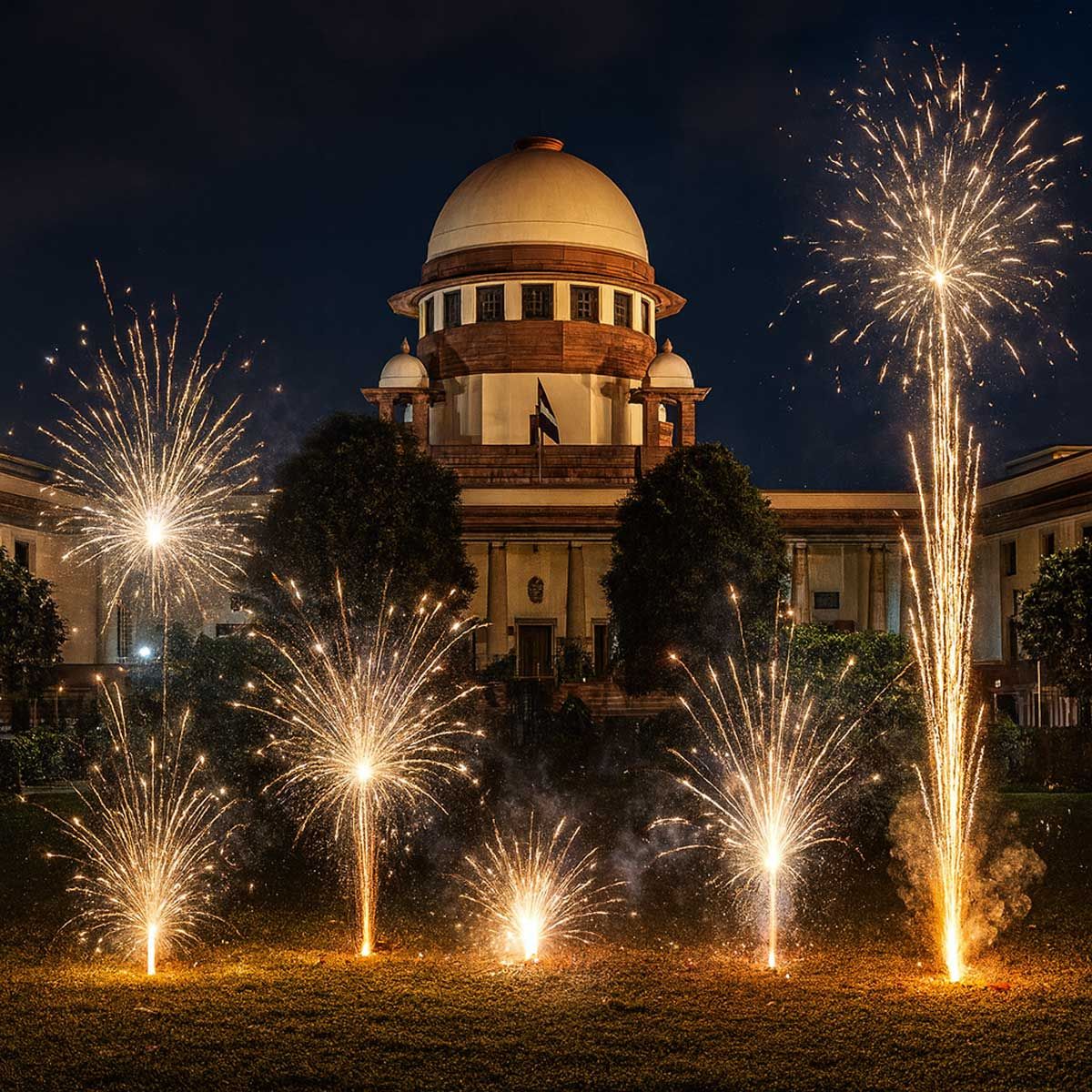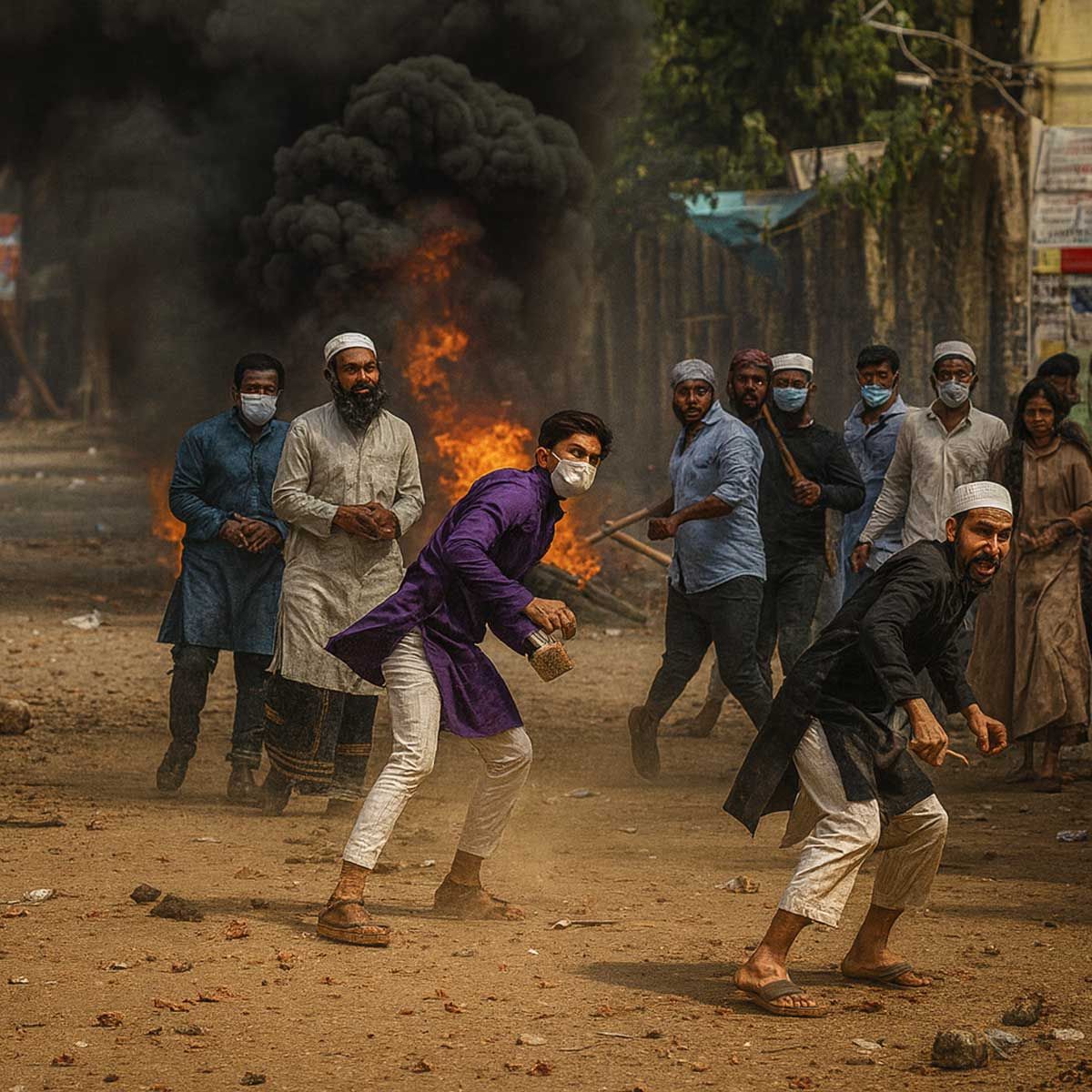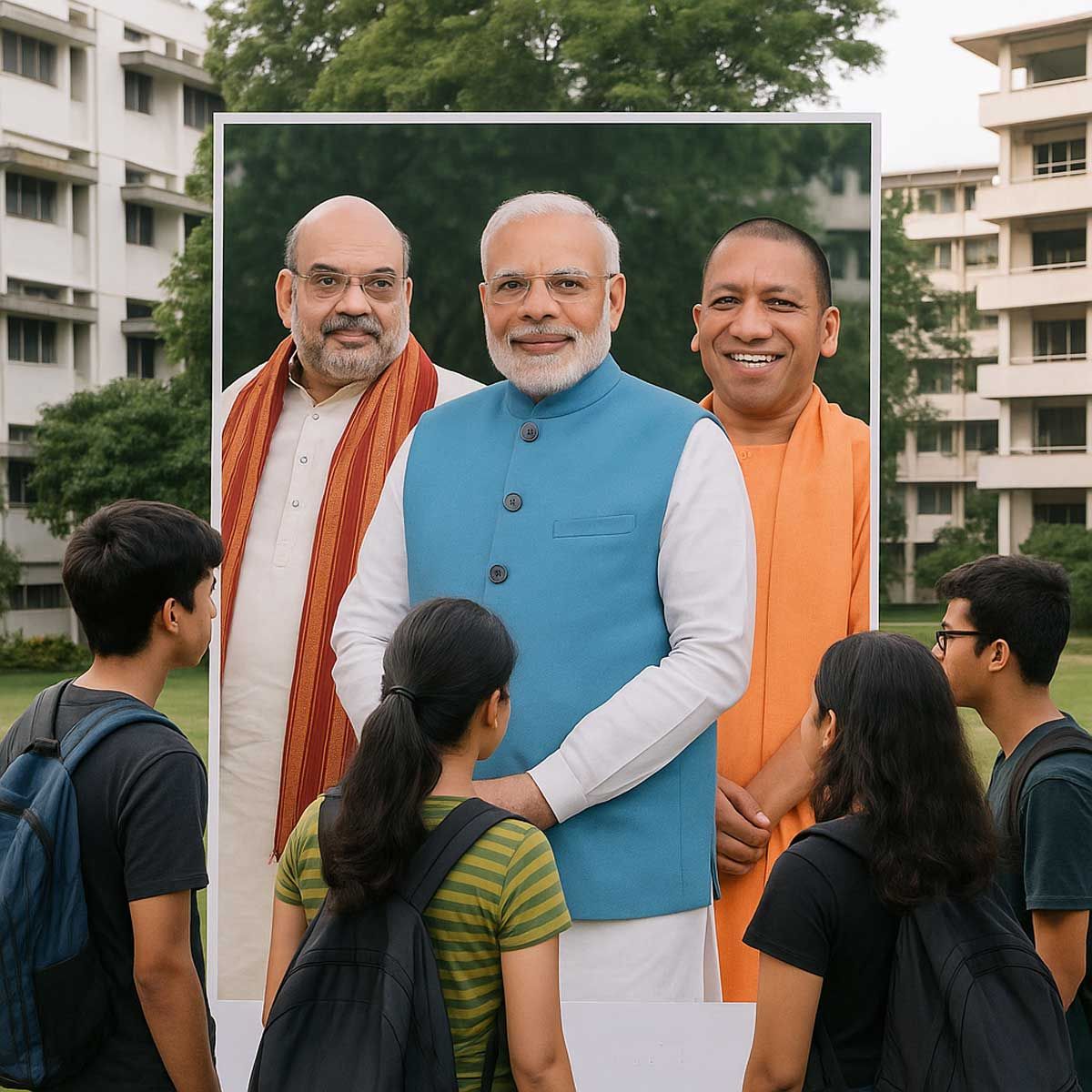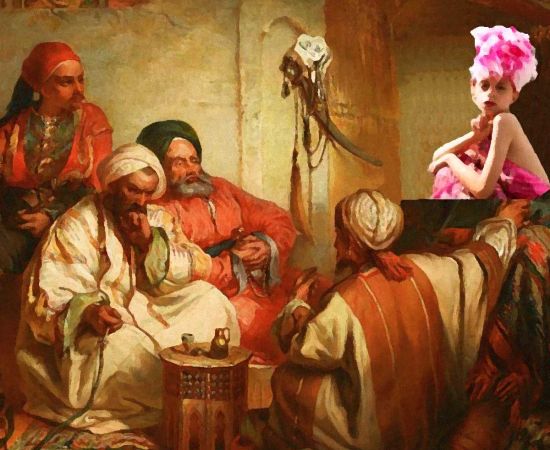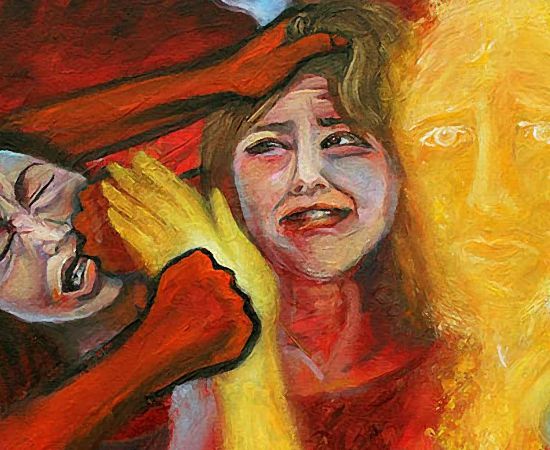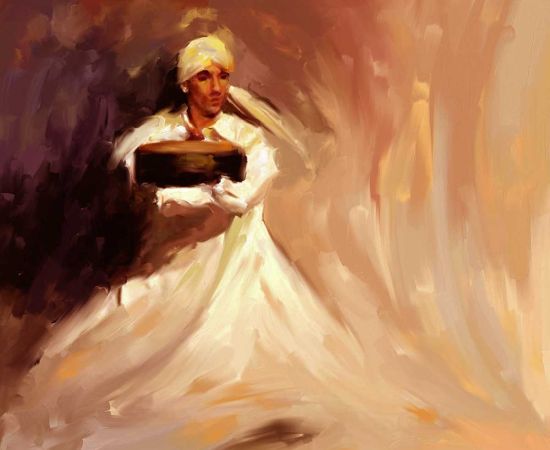More Coverage
Twitter Coverage
Satyaagrah
Written on
Satyaagrah
Written on
Satyaagrah
Written on
Satyaagrah
Written on
Satyaagrah
Written on
JOIN SATYAAGRAH SOCIAL MEDIA
In Agra’s Nagla Nathu, 6 girls, including bride-to-be Muskan and her sisters Shivani & Kajal drowned in the Yamuna while filming a reel—what began with laughter ended in funerals, as wedding dreams sank into silence, exposing the dark side of reels-mania
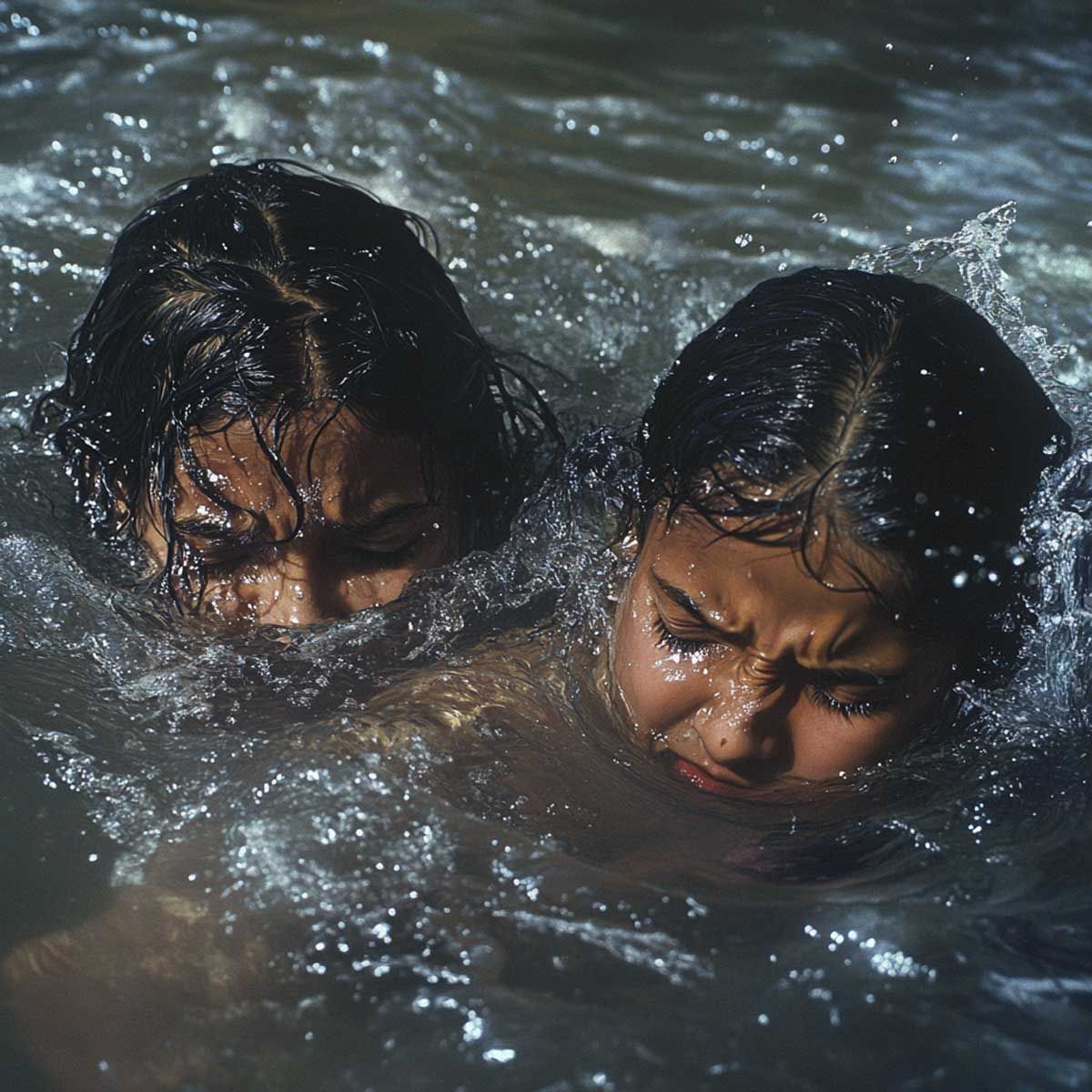
In the peaceful village of Nagla Nathu, part of Agra’s Sikandra area, families were once busy planning for a big celebration. A wedding was on the horizon, and joy had filled the air. Relatives were preparing clothes, guests were expected, and everyone was excited about the upcoming marriage of Muskan, the eldest daughter in the family. But all those dreams collapsed into heartbreak on the morning of June 3, 2025.
That day, six young girls, aged between 10 and 18, left their homes—never to return alive. The same village that was preparing for wedding songs now echoed with cries of unimaginable sorrow. The joy was replaced with grief, the excitement turned into mourning, and six families were shattered forever. The reason? A moment of excitement, a short video, a social media reel.
|
They were all cousins from the same extended family. The girls—Muskan (18), Shivani (17), Kajal, Sandhya (12), Divya (13), Naina (14), and Sonam (12)—walked to the Yamuna River, just 800 meters from their homes. It was a warm summer morning, and like many others their age, they were fond of making short videos for platforms like Instagram and TikTok.
Carrying a smartphone, the girls planned to enjoy a short dip in the river while filming themselves. According to reports, they were “playing and recording videos” near the riverbank. Local media confirmed that “six girls…aged between 10 and 18 years…died after drowning” on that Tuesday morning.
They were laughing, smiling, and enjoying their moment in front of the camera—until the moment turned fatal.
At around 10:30 AM, tragedy began to unfold. Sandhya, the youngest, accidentally stepped into a deep pit under the river’s surface. Without realizing the risk, her sisters Muskan and Divya rushed in to save her. But the Yamuna, swollen due to recent rains, had become unpredictable and wild. The current was too strong, and they too began to drown.
Panicking, their cousins Naina, Sonam, and Shivani jumped in next, thinking they could help. But instead, the river pulled all six girls under. They were trapped by a natural death pit—a deep depression caused by illegal sand mining, a hidden danger that is rarely visible from the shore. One of their brothers, Deepesh, who had accompanied them, helplessly recalled:
“While bathing, Sandhya unknowingly entered deep water. Seeing this, Muskan and Divya tried to save her. I also tried to save them…”
Just like that, within minutes, six young lives vanished into the water. Laughter turned into screaming. Joy turned into chaos.
The village rushed to the scene. A desperate rescue operation began, involving local villagers, the Provincial Armed Constabulary (PAC), and SDRF divers. Within 30 minutes, four lifeless bodies were pulled from the water. Two of the girls—Muskan and Shivani—were still breathing faintly. They were taken to the hospital with urgency and hope. But that hope didn’t last. Despite the efforts of doctors, both succumbed to their injuries hours later.
The final two bodies were found 1.5 kilometers downstream, washed away by the river's powerful flow. It was one of the darkest days Nagla Nathu had ever seen.
Agra’s District Magistrate Arvind Mallappa Bangari and Additional CP Ram Badan Singh personally visited the site. The district administration confirmed that the location “is not a bathing ghat”, which means it was never safe for swimming. Arrangements for relief began immediately, and Uttar Pradesh Chief Minister Yogi Adityanath announced ₹4 lakh financial support for each grieving family.
|
As news spread, the identities of the victims became public:
Sandhya (12)
Divya (13)
Naina (14)
Muskan (18)
Shivani (17)
Sonam (12)
Muskan, Divya, and Sandhya were real sisters, and the other three were their cousins. All six were part of one large, close-knit household. The community was in shock. At the hospital and mortuary, families gathered in disbelief. Women screamed, relatives collapsed in grief, and neighbors stood silently in mourning. Police officials described the scene in one heartbreaking sentence:
“Grieving family members… were inconsolable.”
As time passed and the rescue ended, people began asking: How did this happen? Why didn’t anyone stop them? Why was the river so dangerous?
Locals soon realized that the Yamuna had been hiding danger. Due to continuous illegal sand mining, the riverbed had been altered. According to Bhaskar News, “the river appeared deceptively calm due to recent rainfall, which had deepened certain areas with hidden pits.” From the surface, the water looked shallow and safe. But below were sudden drops—some as deep as 15 feet, according to police.
That day, those drop-offs became the girls’ grave.
Their final video—the one they recorded just before drowning—was found in their phone. In the clip, the girls are seen “holding hands and wading into the water”, smiling, unaware of the death trap ahead.
Now, that phone is no longer just a gadget. It is a symbol of lost lives and shattered dreams.
|
A Village in Mourning
The news of the incident spread faster than the Yamuna’s waters. What had been a day of expected celebration quickly became a day of unforgettable loss. The sound of dhols and wedding songs that once echoed in the streets of Nagla Nathu was replaced by the cries of parents who had lost their daughters. Within hours, the village was draped in black, not from any cloth, but from the grief that had swallowed its heart.
“Where wedding preparations once brought smiles, now only grief remained.” The engagement of Muskan, once a symbol of joy, had turned into a memory too painful to bear. Instead of preparing for her wedding, her family now had to prepare for her funeral. Her bridal clothes, jewelry, and dreams—all sat untouched, frozen in time.
The homes that once echoed with laughter now stood in heartbreaking silence. “The walls bore witness to the unbearable loss of six daughters, sisters, and dreams.” The girls had filled these houses with energy and hope. Now, each corner of each home felt like a reminder of what was gone forever.
“The families, bound by blood and now by shared sorrow, clung to each other.” They found no comfort, no peace, only each other’s tears. Mothers wept, unable to let go of their children’s clothes. Fathers stared blankly at the river, searching for answers in the waters that had taken everything. Siblings sat alone, their world suddenly emptier, their laughter suddenly hollow.
“The community gathered, not for a wedding, but to mourn the lives cut short by a momentary lapse in judgment, driven by the pressure to create a perfect social media moment.”
This was not just a family tragedy—it was a village tragedy. And it was not an isolated one.
The Deadly Pattern of “Reel Mania”
Sadly, this was not the first such story in India. In fact, it was part of a disturbing trend that has emerged in recent years, where the chase for viral fame has ended in real-life funerals.
“In recent months, similar ‘reel mania’ deaths have shocked the nation.” According to a report by the Times of India, “In January 2025, five youths died in Telangana’s Kondapochamma Sagar reservoir while filming social-media videos.” Just a few months earlier, “in May 2024, four teenagers in Bihar nearly drowned while shooting clips in the Ganges.” These incidents, combined with the Agra tragedy, have now claimed at least 15 young lives—all of whom were simply chasing the thrill of online validation.
Each of these events followed a chillingly similar pattern: a moment of fun, a dangerous location, and a reel that never got uploaded. “Each case prompts mournful headlines and a collective ‘why?’ from distraught communities.”
And yet, nothing changes.
|
Across India—and in other parts of the world—young people have been drawn into dangerous behavior by the temptation of viral fame. From standing on train tracks to dancing on rooftops, teenagers are risking their lives for a few seconds of attention.
“The obsession with social media reels has claimed countless lives.” The same was true in Nagla Nathu. The six girls didn’t go to the river with the intention of dying. They went to make a reel—a short, cheerful video that they hoped would be liked, shared, and maybe even go viral. But “they ignored the dangers of the Yamuna, a river notorious for its hazardous pits caused by unchecked illegal mining.”
The Yamuna is not what it used to be. It was once a sacred river, a lifeline for communities. Today, it has become a silent killer. “Illegal sand mining has created deep, unpredictable pits along the riverbed, making it a death trap for unsuspecting bathers.” Despite this being known for years, “authorities have failed to address the issue, allowing the river to claim more lives.”
The truth is painful: “The girls’ deaths were not just a result of their own actions but a systemic failure to protect communities from known dangers.”
And yet, social media platforms continue to thrive, promoting short-form content that encourages more risk and less thought.
“Social media platforms, while offering a space for creativity, have fueled a culture of reckless behavior.” The desire to be different, to go viral, to stand out in a crowded digital world has blinded many to the real-world dangers they’re walking into.
On X (formerly Twitter), users shared their sorrow. One post said:
“The girls went to the Yamuna to make a reel, but their feet got stuck in a pit, and they all drowned.”
Another wrote:
“Reels have broken the thread of six lives.”
These aren’t just comments. They are cries from a society slowly realizing how deeply broken things have become.
“The Agra tragedy is a heart-wrenching wake-up call.” It demands we take a long, hard look at the value we place on fame, and the risks our children are taking to achieve it.
The six girls—Muskan, Shivani, Kajal, and their cousins—were not reckless thrill-seekers. They were kind, cheerful, and creative girls, full of life. But “they were not just victims of the Yamuna’s treacherous waters but of a society that glorifies fleeting moments over lasting safety.”
“Their deaths are a stark reminder that no like, share, or view is worth a life.”
Following the tragedy, the Uttar Pradesh government announced financial aid of ₹4 lakh rupees for each victim’s family. It was a needed gesture. But as the families have silently acknowledged, “money cannot replace the laughter of a daughter, the dreams of a sister, or the hope of a bride-to-be.”
These families will carry this loss forever. There is no amount of compensation that can fill the emptiness of a girl’s room now frozen in time, or bring back a daughter’s final words that were never heard again.
 Support Us
Support Us
Satyagraha was born from the heart of our land, with an undying aim to unveil the true essence of Bharat. It seeks to illuminate the hidden tales of our valiant freedom fighters and the rich chronicles that haven't yet sung their complete melody in the mainstream.
While platforms like NDTV and 'The Wire' effortlessly garner funds under the banner of safeguarding democracy, we at Satyagraha walk a different path. Our strength and resonance come from you. In this journey to weave a stronger Bharat, every little contribution amplifies our voice. Let's come together, contribute as you can, and champion the true spirit of our nation.
 |  |  |
| ICICI Bank of Satyaagrah | Razorpay Bank of Satyaagrah | PayPal Bank of Satyaagrah - For International Payments |
If all above doesn't work, then try the LINK below:
Please share the article on other platforms
DISCLAIMER: The author is solely responsible for the views expressed in this article. The author carries the responsibility for citing and/or licensing of images utilized within the text. The website also frequently uses non-commercial images for representational purposes only in line with the article. We are not responsible for the authenticity of such images. If some images have a copyright issue, we request the person/entity to contact us at This email address is being protected from spambots. You need JavaScript enabled to view it. and we will take the necessary actions to resolve the issue.
Related Articles
- What IMA President thinks: Using hospitals to convert to Christianity, contempt for Hinduism, seeing COVID as a ‘silver lining’ because of conversions and more
- Indian state bans book on Mahatama Gandhi after reviews hint at his gay relationship
- Aatish Taseer shows how his ‘jamaat’ has mastery over playing victim, brands Bollywood pro-Modi even as it remains anti-Hindu
- Subramanian Swamy gets desperate as rumours of cabinet reshuffle gain ground: Hubris and delusions
- Three booked for falsely accusing general secretary of the Ram Temple Trust in a Facebook post in ‘land scam’
- Haryana: Man burnt alive to make him ‘martyr’ against farm laws, villagers demand security from ‘farmers’ at Tikri border
- 5 lakh kg of temple jewellery has been melted so far, DMK government planning to melt even more
- Here is a list of 20 incidents where the ‘Jai Shri Ram’ slogan has been misused to turn a random crime into ‘hate crime’
- Kejriwal Govt Inflated Delhi's Oxygen Demand By Four Times During Second Wave Peak: SC Oxygen Audit Team
- Negative sentiments about China and Xi Jinping at a record high among most advanced countries: Pew Research study
- Under Taliban rule: Humanitarian catastrophe escalating rapidly in Afghanistan, Hunger forces Afghans to sell young daughters into marriage to ensure the survival of the rest of the family members
- Sharjeel Imam, accused of Delhi riots explained why Indian Muslims have always celebrated Pakistan’s cricket match win against India
- 'No Halal' restaurant Owner Thushara attacked by Islamists in Kerala, threatened not to sell Pork meat
- In her chronic hate for Modi, the Congress spokesperson Dr. Shama Mohamad spread blatant lies about Prime Minister and India’s state-of-the-art pavilion at Dubai Expo 2020, netizens bust false claims by sharing video
- Complaint filed against IMA President Jayalal for trying to abuse his position during Covid pandemic to spread Christianity



